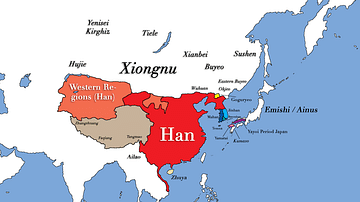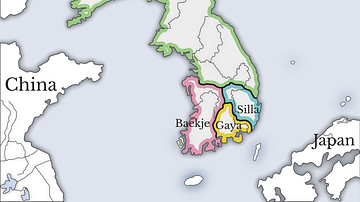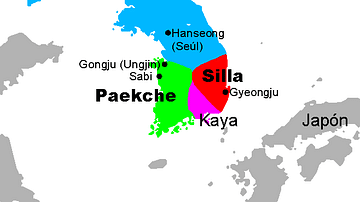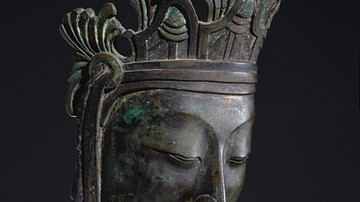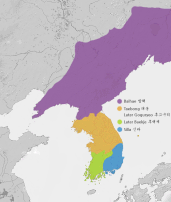Illustration
This map depicts the boundaries of all major civilizations in East Asia at the beginning of the Three Kingdoms Period of China, with italics indicating nomadic bands and other tribal societies.
Following the collapse of Han Dynasty in 220 CE, three Kingdoms: Cao Wei (220 CE), Shu Han (221 CE), and Wu (229 CE) were established. In the meantime, the Xianbei people defeated Xiongnu and became the most powerful tribe in the north.
References
- Chen Shou. Records of Three Kingdoms. Yunnan People's Publishing House, 2011.
- Tan Qixang. Historical Atlas of China. China Cartographic Publishing House, 1982
Cite This Work
APA Style
Chen, S. (2017, March 27). Three Kingdoms Period of China and the Rise of Xianbei in the year 229 CE. World History Encyclopedia. Retrieved from https://www.worldhistory.org/image/6454/three-kingdoms-period-of-china-and-the-rise-of-xia/
Chicago Style
Chen, Stone. "Three Kingdoms Period of China and the Rise of Xianbei in the year 229 CE." World History Encyclopedia. Last modified March 27, 2017. https://www.worldhistory.org/image/6454/three-kingdoms-period-of-china-and-the-rise-of-xia/.
MLA Style
Chen, Stone. "Three Kingdoms Period of China and the Rise of Xianbei in the year 229 CE." World History Encyclopedia. World History Encyclopedia, 27 Mar 2017, https://www.worldhistory.org/image/6454/three-kingdoms-period-of-china-and-the-rise-of-xia/. Web. 21 Apr 2025.

